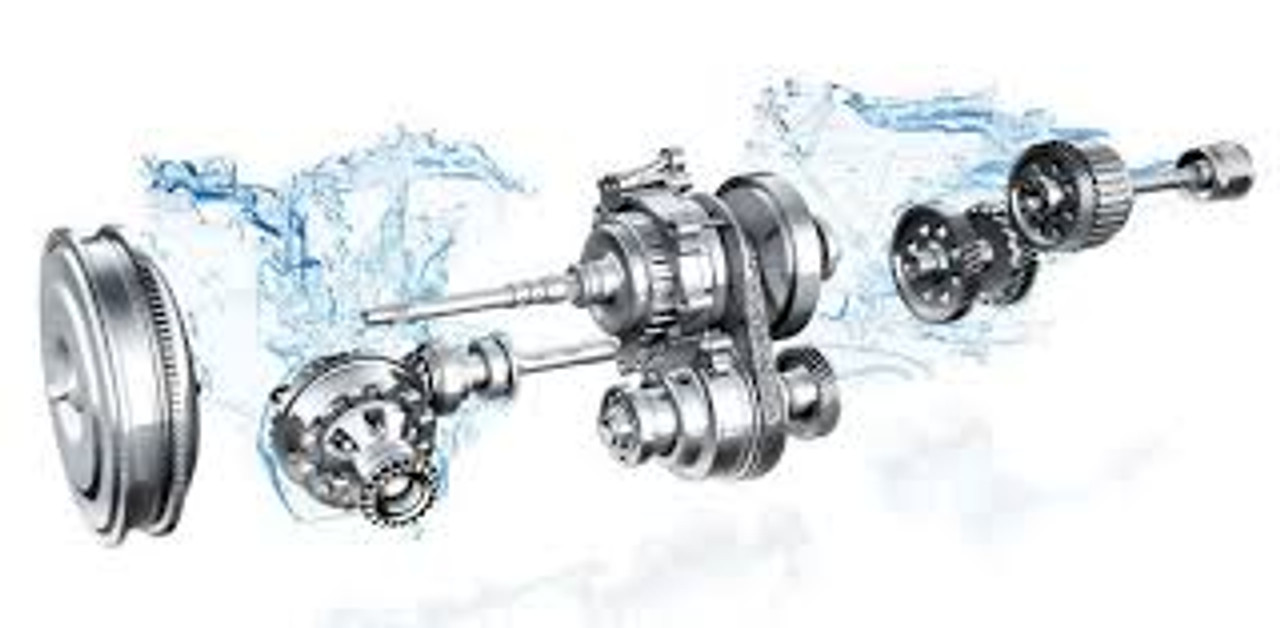CVT Transmissions are used in nearly every modern car today and there is a lot of negative information on the internet about these transmissions.Which is written by people who don't know how these transmissions work and what is involved to maintain them properly.
The manufacturers will tell you it doesn't need an oil change only a top up etc.
I am repairing these transmissions now for more than 20 years and what I have seen is mind boggling.
75% fail due to lack of maintenance. 15% fail due to workshops using the wrong oil and 10 % fail due to faulty parts or substandard items used by the manufacturer
CVT Transmissions are belt driven transmissions and you have to understand that when you have a steel belt running on a Steel pulley it will cause friction.This friction have to be reduced with a special oil but not to the extend that it will loose traction on the pulley which will cause slipping and loss of drive.
Because there have to be a friction which will cause wear of the belt and pulleys. This creates very small steel particles in the oil ( When you drain the oil it looks like a metallic paint )These particles also going trough your bearings, Hydraulic control unit and clutch components causing wear and tear on all of these parts.
By changing the interval of oil changes to 40k the transmission will last for several years and a very high mileage,assuming the right CVT oil is used every time.I also recommend to replace the filters and don't use a flushing machine because this will not clean your blocked filters it only drains the oil.
Most of the CVT Transmissions used in Nissan,Mitsubishi, Jeep, Citroen, Renault and Suzuki are manufactured by Jatco. These transmission are using 2 oil filters, 1 is Internal ( You have to remove the sump to reach it ) and 1 filter external in a little casing on the outside of the transmission or behind the Heat exchange ( oil cooler unit }.
A lot of dealers and mechanics don't know this and most dealers don't have these small filters in stock. This small filter is an in line filter with the Oil cooler and blocks up very fast causing an oil flow restriction which will cause overheating of the transmission. This small filter should be replaced at every service of the vehicle ( 15 k to 20 K )
Diagnosing CVT Transmission faults and Repairing these transmissions can be a challenge because they are using a lot of Electronics and complicated procedures When you do repair CVT Transmissions never cut corners and be so clean as possible.Lots of workshops are only doing patch up jobs which are lasting for 3 to 6 months and when you come back it is never their fault
CVT Transmissions are using sensors to monitor the proper functioning of mechanical parts inside the transmission,when carrying out a diagnose and it comes up with a fault code of the steppe motor most of the workshops will replace the steppe motor and the oil and charge you an arm and led for this.
The steppe motor is a device which is hooked up to the hydraulic control unit ( valve body ) and on the other side to the ratio sensor which is connected to the primary pulley. When the valve body is contaminated by dirty oil the part connected to the steppe motor can become seized or sticky causing the steppe motor not to work properly,The same happened when the Primary pulley failed ( Happens a lot of time in the Jatco JF011 (REOF10 ) CVT Transmissions ) Again the steppe motor will not work properly and will set the fault code
Repairing a CVT Transmissions means : 1. Replacing all Bearings ( don't replace only the 1 you think is faulty ) 2. Replacing all Seals and gaskets. 3. Replace all other parts which are suspect to extended wear and tear. 4. Pressure test every part for leaking.
An other very important issue is that most of the CVT Transmissions are managed by a TCU (Transmission control unit) and these units are communicating with all other control units in the vehicle.There are several units in a car and most of the time the BDU ( Body control unit ) is the server. Soon you are adding any aftermarket electronic component to the today's vehicles it can interfere with the other control units causing fault codes etc. so don't fit any after market devices
After fitting a replacement transmission or a major repair on the transmission, the contol modules have to be reset to Zero " 0 " and an adaptation procedure ( relearn )have to be carried out. If this is not done properly it can cause damage to the Replacement transmission and you can start again
This is my first part of information and I will keep adding to this
 New Zealand Dollar
New Zealand Dollar
 USD
USD
 Euro
Euro
 Australian Dollar
Australian Dollar
 British Pound
British Pound
 Canadian Dollar
Canadian Dollar
 Japanese Yen
Japanese Yen
 Trinidad Tobago Dollar
Trinidad Tobago Dollar
 Barbados Dollar
Barbados Dollar
 Brazil Real
Brazil Real
 Denmark Krone
Denmark Krone
 Hong Kong Dollar
Hong Kong Dollar
 Russia Ruble
Russia Ruble
 South Africa Rand
South Africa Rand
 Mexico Peso
Mexico Peso
 Switzer Franc
Switzer Franc
 Nigeria Naira
Nigeria Naira
 Argentina Pesa
Argentina Pesa

